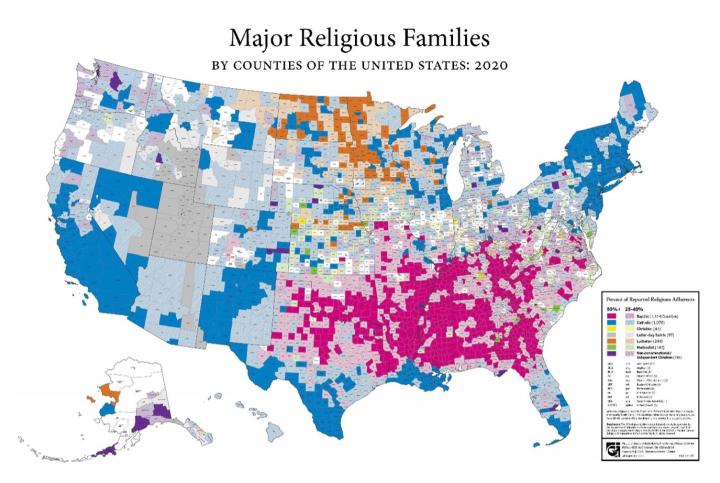Dr. Scott Thumma Plays Key Role in U.S. Religion Census
November 11, 2022
A report by the U.S. Religion Census (USRC) released on Nov. 11, 2022, is the result of a survey conducted every 10 years by the Association of Statisticians of American Religious Bodies. Dr. Scott Thumma, Director of the Hartford Institute for Religion Research at Hartford International University, was a key player in "the most comprehensive effort to document religious life in every U.S. county."
The following press release has been issued by the USRC:
U.S. Religion Census Shows Both Stability and Change in Congregational Life
Religious congregational life is alive and well, according to results of the U.S. Religion Census (USRC), which will be released Nov. 11. The USRC, conducted every 10 years by the Association of Statisticians of American Religious Bodies (ASARB), shows stability in overall numbers of congregations and adherents but substantial changes for some religious bodies.
The USRC is the most comprehensive effort to document religious life in every U.S. county. It identified 372 religious bodies, 356,739 congregations, and 161,371,931 adherents in 2020.
Among the 212 religious bodies participating in both the 2010 and 2020 USRC, the number of congregations increased 2.2% and the number of adherents increased 6.5%, while the total U.S. population increased 7.4% during this time. Changes varied by body. For example, the number of adherents in the Southern Baptist Convention and the United Methodist Church each decreased by about two million, while the number of adherents in independent, nondenominational Christian churches increased by nearly nine million.
“The decrease in certain denominations and increase in nondenominational churches may be a result of the same factors,” said Scott Thumma, director of the Hartford Institute for Religion Research, who counted independent churches for the USRC. “Denominational brands have weakened, and divisions have increased over issues such as female clergy or sexual orientation. This likely led some adherents to seek or even start new, nondenominational churches.”
Other USRC highlights:
- The Catholic Church has the most adherents, with more than 61 million, the Southern Baptist Convention has the most congregations, with more than 51,000, and the United Methodist Church is in the most counties, 2,989.
- Non-Christian bodies continue to increase their presence. The number of Muslims, for example, increased from 2.6 million to 4.5 million. The USRC includes congregation counts of five other non-Christian bodies and congregation and adherent counts for Baháʼí, three Buddhist groups, three Hindu groups, and four Jewish groups.
- Oriental Orthodox Christians have surged but Eastern Orthodox have decreased.
- The 2020 USRC includes the first-ever count of Jehovah’s Witness adherents.
- It also has the most-extensive counts ever of Amish and Plain Anabaptist bodies.
For more information on the U.S. Religion Census, including data downloads, see www.USReligionCensus.org. For more on the ASARB, see www.asarb.org.
_______________________________________________________________________________________________________
National summary data and for individual religious bodies by nation, state, and county, as well as a variety of maps will be available on the U.S. Religion Census website, the day of the release, Nov. 11.
The U.S. Religion Census website features a downloadable high-res map showing leading denominational family by each county in the United States, with instructions for ordering printed versions of this map for wall display. A version of this map is pictured below.

Join our mailing list
Keep up with all the latest happenings at Hartford International.

